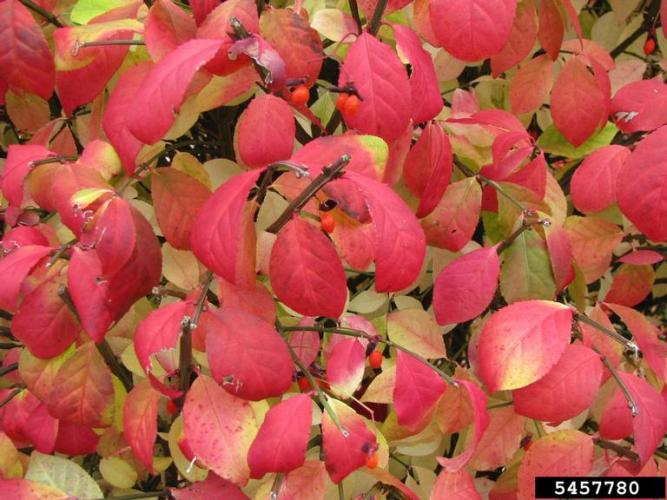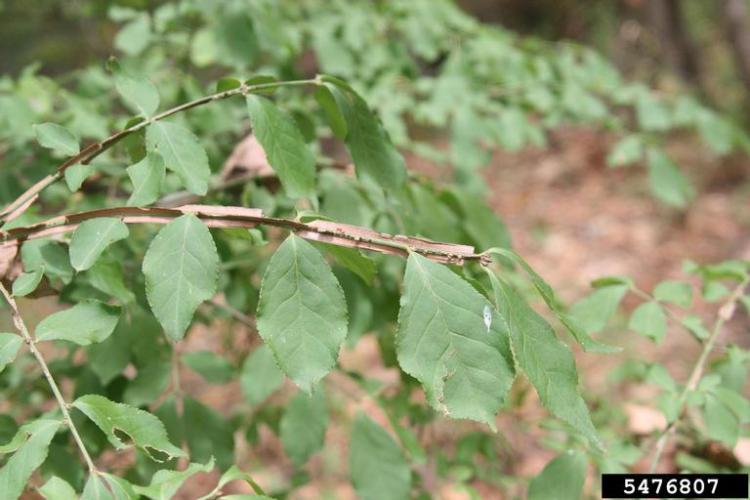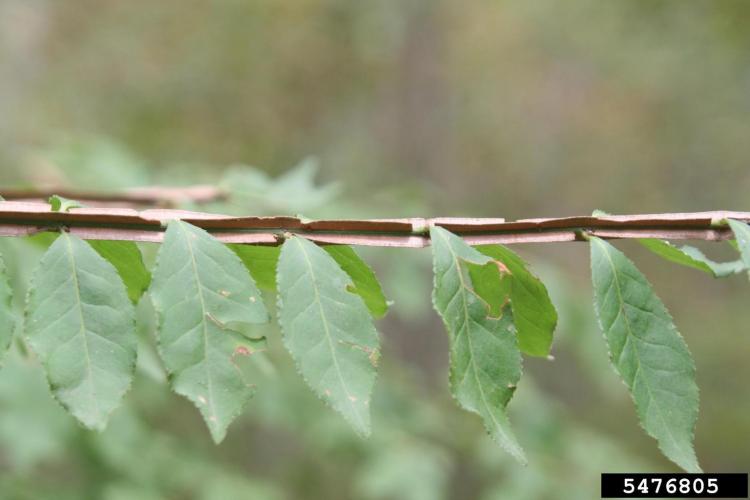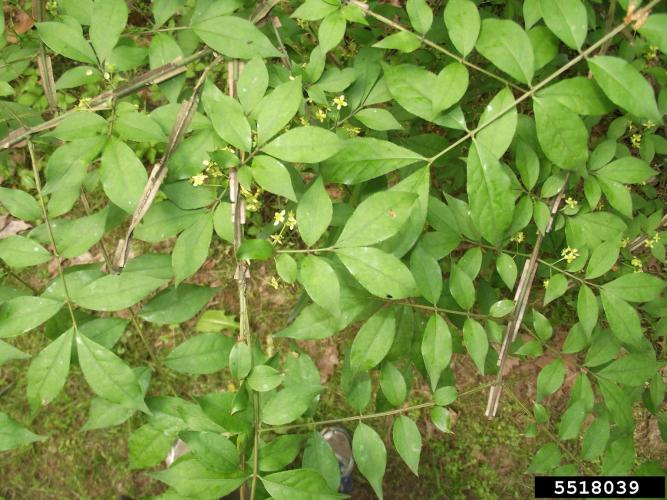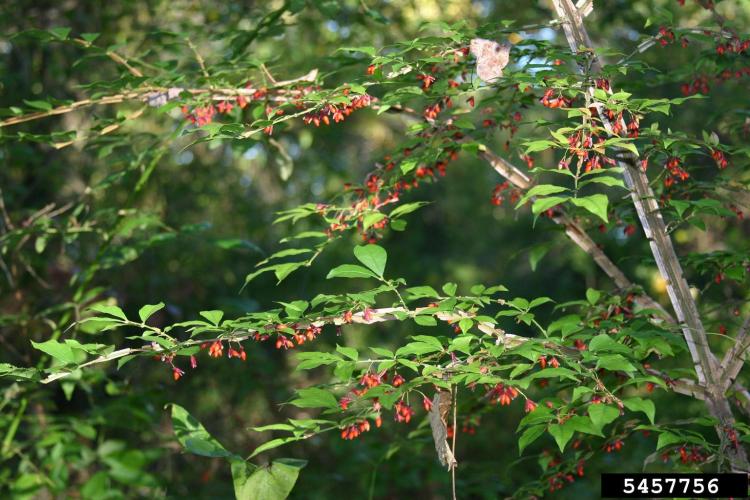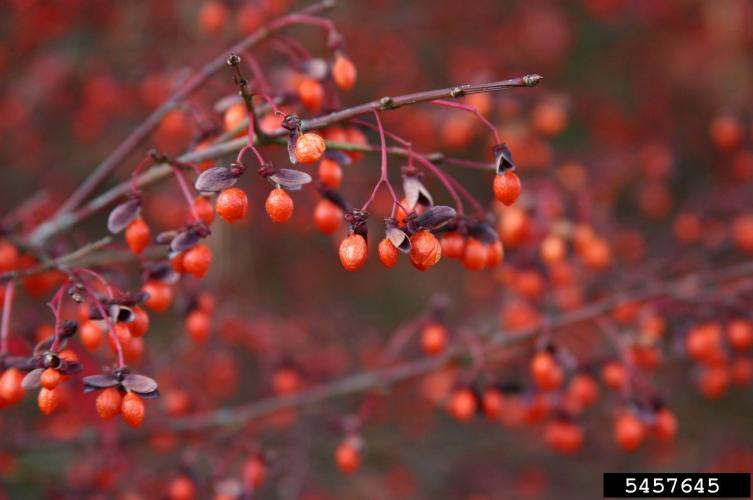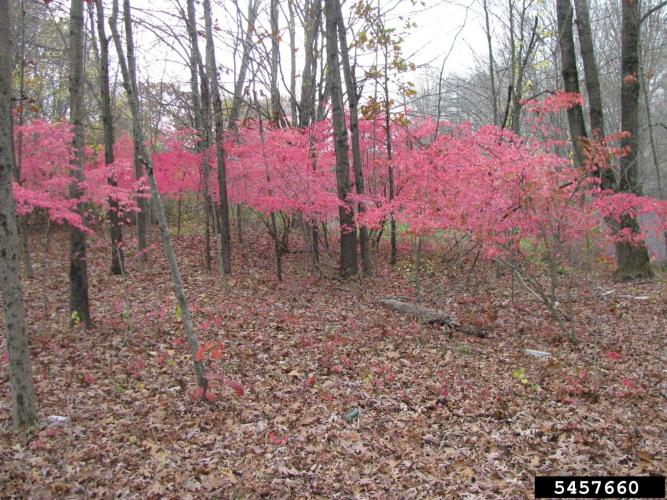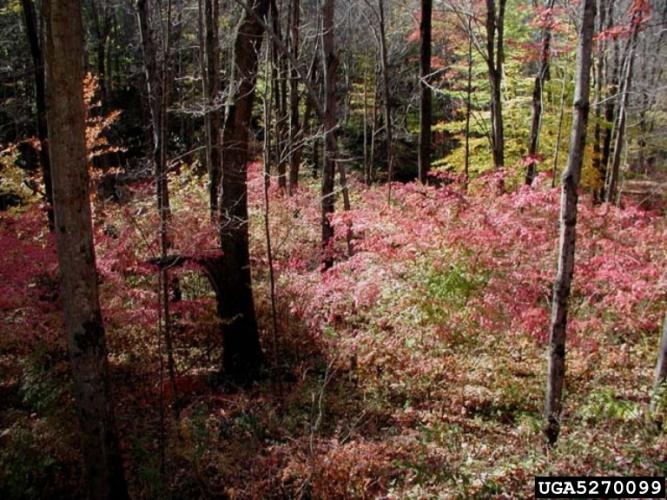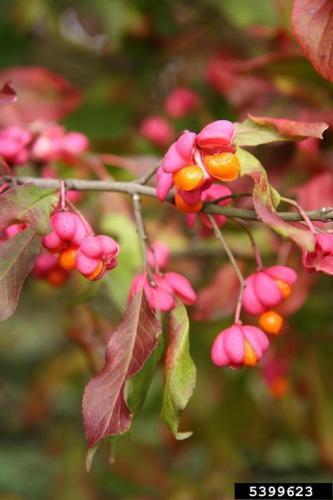Burning Bush or Winged Euonymus
Identification
Appearance
Euonymus alatus is a deciduous shrub, up to 20 feet in height, which invades forests throughout the eastern United States. Two to four corky ridges often form along the length of young stems, though they may not appear in shaded areas or closed canopies.
Foliage
The opposite, dark green leaves are less than 2 inches long, smooth, rounded and taper at the tips. The leaves turn a bright crimson to purplish color in the fall.
Flowers
The flowers are inconspicuous, are greenish yellow and have four petals. Flowers develop from late April to June and lay flat against the leaves.
Fruit
The fruit which appears from September to October are reddish capsules that split to reveal orange fleshy seeds.
Check out the downloadable treatment sheet above.
Biology
Ecological Threat
Burning bush (Euonymus alatus) spreads from yards to forests and fields after birds consume the fruit and carry the seeds across long distances. Fruits left uneaten fall to the ground, creating a “seed shadow” around the plant’s base.
Origin
Burning bush has long been a favorite horticultural plant.
Habitat
Forest edges, meadows, fields, disturbed areas, shrublands
Life Cycle
Winged euonymus primarily reproduces by seed but it can spread through vegetative means by root suckering. The 4-petaled flowers are inconspicuous and appear in May to early June. The fruit is a cluster of showy pods, usually four found in the leaf axils. Immature fruits are green that ripens to a purplish outer side that splits to reveal seeds with bright, red-orange coatings in the fall.
Vermont Distribution
How You Can Help
Native/non-invasive alternatives
Common winterberry (Ilex verticillata), American witch-hazel (Hamamelis virginiana)
Native Perennials and Shrubs for Vermont Gardens
Alternatives to Common Invasive Plants and Characteristics of Select Alternatives
Citations
Photo Credit
5476807, 5476805, Chris Evans, Univeristy of Illinois, Bugwood.org
5457780,5270099, 5457645,5457756, 5457684, Leslie J. Mehrhoff, University of Connecticut, Bugwood.org
5518039, Richard Gardner, UMES, Bugwood.org
Information Credit
Video: Purdue University Extension, ID Burning Bush
Center for Invasive Species and Forest Health, Winged burning bush
